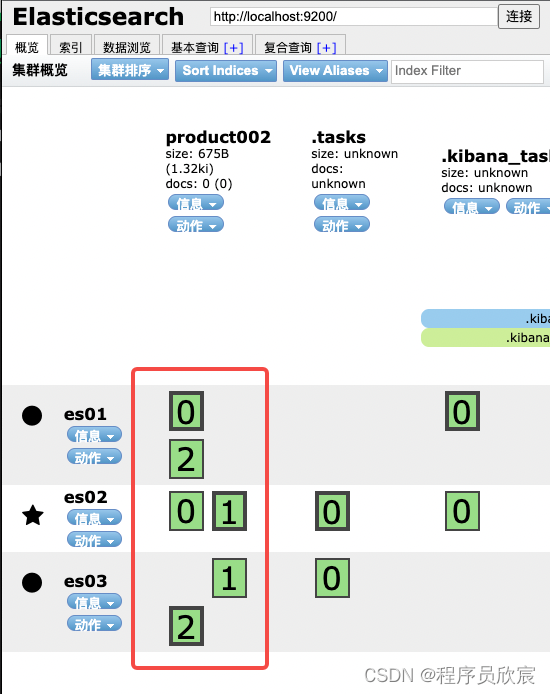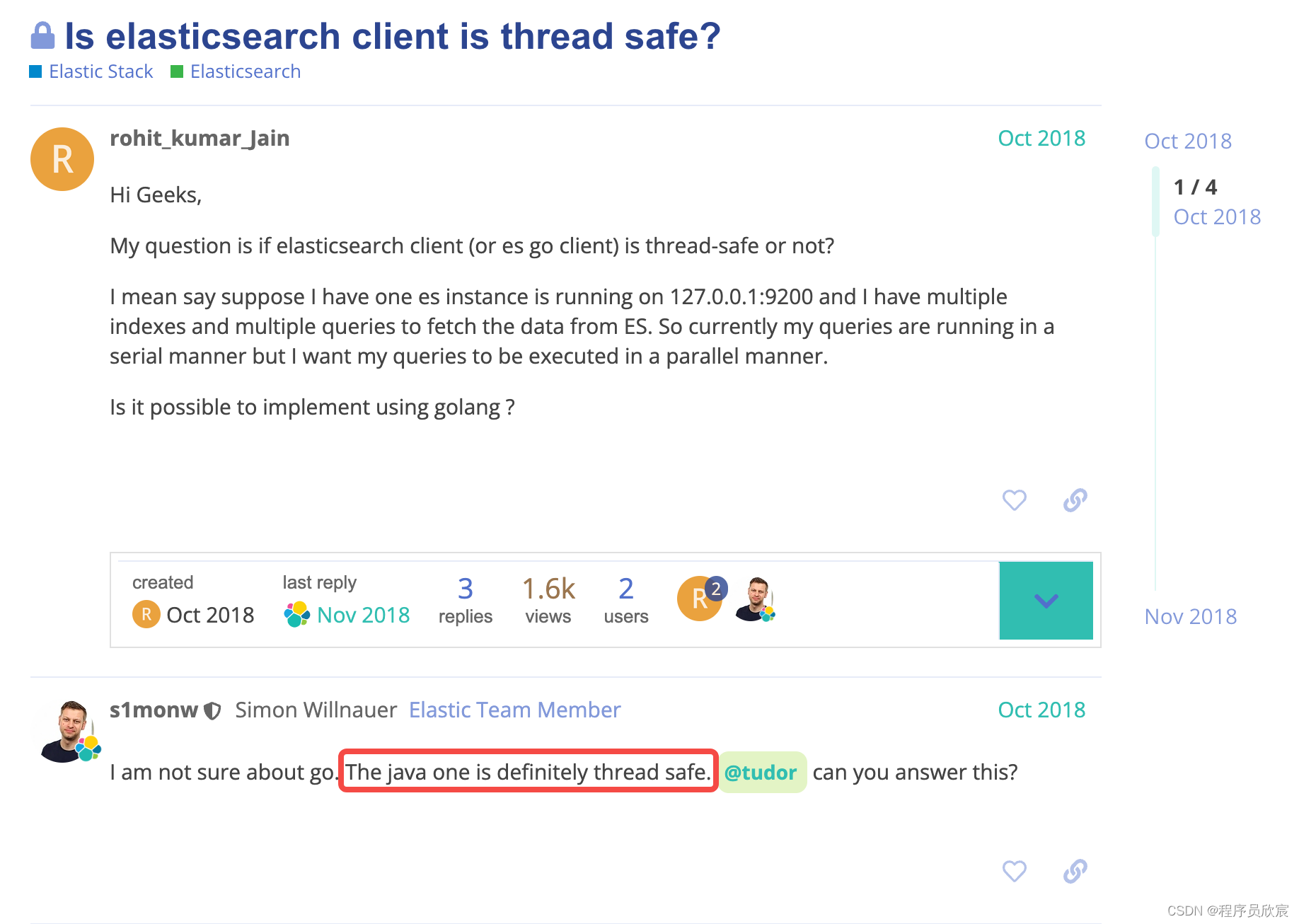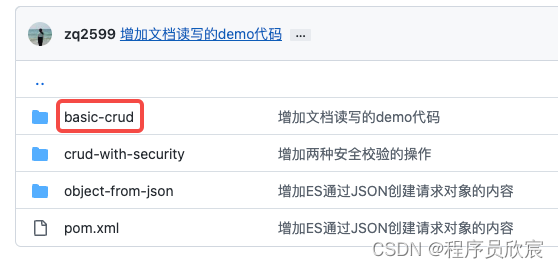这里分类和汇总了欣宸的全部原创(含配套源码):https://github.com/zq2599/blog_demos

为了便于管理依赖库版本和源码,《java与es8实战》系列的所有代码都以子工程的形式存放在父工程elasticsearch-tutorials中
《java与es8实战之二:实战前的准备工作》一文说明了创建父工程的详细过程
在父工程elasticsearch-tutorials中新建名为basic-crud的子工程,其pom.xml内容如下
<?xml version="1.0" encoding="UTF-8"?>
<project xmlns="http://maven.apache.org/POM/4.0.0" xmlns:xsi="http://www.w3.org/2001/XMLSchema-instance"
xsi:schemaLocation="http://maven.apache.org/POM/4.0.0 http://maven.apache.org/xsd/maven-4.0.0.xsd">
<!-- 请改为自己项目的parent坐标 -->
<parent>
<artifactId>elasticsearch-tutorials</artifactId>
<groupId>com.bolingcavalry</groupId>
<version>1.0-SNAPSHOT</version>
<relativePath>../pom.xml</relativePath>
</parent>
<modelVersion>4.0.0</modelVersion>
<!-- 请改为自己项目的artifactId -->
<artifactId>basic-crud</artifactId>
<packaging>jar</packaging>
<!-- 请改为自己项目的name -->
<name>basic-crud</name>
<url>https://github.com/zq2599</url>
<!--不用spring-boot-starter-parent作为parent时的配置-->
<dependencyManagement>
<dependencies>
<dependency>
<groupId>org.springframework.boot</groupId>
<artifactId>spring-boot-dependencies</artifactId>
<version>${springboot.version}</version>
<type>pom</type>
<scope>import</scope>
</dependency>
</dependencies>
</dependencyManagement>
<dependencies>
<dependency>
<groupId>org.springframework.boot</groupId>
<artifactId>spring-boot-starter-actuator</artifactId>
</dependency>
<!-- 不加这个,configuration类中,IDEA总会添加一些提示 -->
<dependency>
<groupId>org.springframework.boot</groupId>
<artifactId>spring-boot-configuration-processor</artifactId>
<optional>true</optional>
</dependency>
<dependency>
<groupId>org.projectlombok</groupId>
<artifactId>lombok</artifactId>
</dependency>
<dependency>
<groupId>org.springframework.boot</groupId>
<artifactId>spring-boot-starter-web</artifactId>
</dependency>
<dependency>
<groupId>org.springframework.boot</groupId>
<artifactId>spring-boot-starter-test</artifactId>
<scope>test</scope>
<!-- exclude junit 4 -->
<exclusions>
<exclusion>
<groupId>junit</groupId>
<artifactId>junit</artifactId>
</exclusion>
</exclusions>
</dependency>
<!-- junit 5 -->
<dependency>
<groupId>org.junit.jupiter</groupId>
<artifactId>junit-jupiter-api</artifactId>
<scope>test</scope>
</dependency>
<dependency>
<groupId>org.junit.jupiter</groupId>
<artifactId>junit-jupiter-engine</artifactId>
<scope>test</scope>
</dependency>
<!-- elasticsearch引入依赖 start -->
<dependency>
<groupId>co.elastic.clients</groupId>
<artifactId>elasticsearch-java</artifactId>
</dependency>
<dependency>
<groupId>com.fasterxml.jackson.core</groupId>
<artifactId>jackson-databind</artifactId>
</dependency>
<!-- 使用spring boot Maven插件时需要添加该依赖 -->
<dependency>
<groupId>jakarta.json</groupId>
<artifactId>jakarta.json-api</artifactId>
</dependency>
<dependency>
<groupId>org.springframework.boot</groupId>
<artifactId>spring-boot-starter-web</artifactId>
</dependency>
</dependencies>
<build>
<plugins>
<!-- 需要此插件,在执行mvn test命令时才会执行单元测试 -->
<plugin>
<groupId>org.apache.maven.plugins</groupId>
<artifactId>maven-surefire-plugin</artifactId>
<version>3.0.0-M4</version>
<configuration>
<skipTests>false</skipTests>
</configuration>
</plugin>
<plugin>
<groupId>org.springframework.boot</groupId>
<artifactId>spring-boot-maven-plugin</artifactId>
<configuration>
<excludes>
<exclude>
<groupId>org.projectlombok</groupId>
<artifactId>lombok</artifactId>
</exclude>
</excludes>
</configuration>
</plugin>
</plugins>
<resources>
<resource>
<directory>src/main/resources</directory>
<includes>
<include>**/*.*</include>
</includes>
</resource>
</resources>
</build>
</project>
elasticsearch:
# 多个IP逗号隔开
hosts: 127.0.0.1:9200
@SpringBootApplication
public class BasicCrudApplication {
public static void main(String[] args) {
SpringApplication.run(BasicCrudApplication.class, args);
}
}
package com.bolingcavalry.basic.config;
import co.elastic.clients.elasticsearch.ElasticsearchAsyncClient;
import co.elastic.clients.elasticsearch.ElasticsearchClient;
import co.elastic.clients.json.jackson.JacksonJsonpMapper;
import co.elastic.clients.transport.rest_client.RestClientTransport;
import lombok.Setter;
import org.apache.http.HttpHost;
import org.elasticsearch.client.RestClient;
import org.springframework.boot.context.properties.ConfigurationProperties;
import org.springframework.context.annotation.Bean;
import org.springframework.context.annotation.Configuration;
import org.springframework.util.StringUtils;
@ConfigurationProperties(prefix = "elasticsearch") //配置的前缀
@Configuration
public class ClientConfig {
@Setter
private String hosts;
/**
* 解析配置的字符串,转为HttpHost对象数组
* @return
*/
private HttpHost[] toHttpHost() {
if (!StringUtils.hasLength(hosts)) {
throw new RuntimeException("invalid elasticsearch configuration");
}
String[] hostArray = hosts.split(",");
HttpHost[] httpHosts = new HttpHost[hostArray.length];
HttpHost httpHost;
for (int i = 0; i < hostArray.length; i++) {
String[] strings = hostArray[i].split(":");
httpHost = new HttpHost(strings[0], Integer.parseInt(strings[1]), "http");
httpHosts[i] = httpHost;
}
return httpHosts;
}
@Bean
public ElasticsearchClient elasticsearchClient() {
HttpHost[] httpHosts = toHttpHost();
RestClient restClient = RestClient.builder(httpHosts).build();
RestClientTransport transport = new RestClientTransport(restClient, new JacksonJsonpMapper());
return new ElasticsearchClient(transport);
}
@Bean
public ElasticsearchAsyncClient elasticsearchAsyncClient() {
HttpHost[] httpHosts = toHttpHost();
RestClient restClient = RestClient.builder(httpHosts).build();
RestClientTransport transport = new RestClientTransport(restClient, new JacksonJsonpMapper());
return new ElasticsearchAsyncClient(transport);
}
}
本篇只是为了演示SpringBoot应用如何连接和操作ES,还不会深入ES操作的细节,因此只对索引做一些基本操作即可
先写一个接口IndexService.java,里面定义了多个索引操作的方法
package com.bolingcavalry.basic.service;
import co.elastic.clients.elasticsearch._types.mapping.TypeMapping;
import co.elastic.clients.elasticsearch.indices.IndexSettings;
import co.elastic.clients.util.ObjectBuilder;
import java.io.IOException;
import java.util.function.Function;
public interface IndexService {
/**
* 新建指定名称的索引
* @param name
* @throws IOException
*/
void addIndex(String name) throws IOException;
/**
* 检查指定名称的索引是否存在
* @param name
* @return
* @throws IOException
*/
boolean indexExists(String name) throws IOException;
/**
* 删除指定索引
* @param name
* @throws IOException
*/
void delIndex(String name) throws IOException;
/**
* 创建索引,指定setting和mapping
* @param name 索引名称
* @param settingFn 索引参数
* @param mappingFn 索引结构
* @throws IOException
*/
void create(String name,
Function<IndexSettings.Builder, ObjectBuilder<IndexSettings>> settingFn,
Function<TypeMapping.Builder, ObjectBuilder<TypeMapping>> mappingFn) throws IOException;
}
package com.bolingcavalry.basic.service.impl;
import co.elastic.clients.elasticsearch.ElasticsearchClient;
import co.elastic.clients.elasticsearch._types.mapping.TypeMapping;
import co.elastic.clients.elasticsearch.indices.IndexSettings;
import co.elastic.clients.util.ObjectBuilder;
import com.bolingcavalry.basic.service.IndexService;
import org.springframework.beans.factory.annotation.Autowired;
import org.springframework.context.ApplicationContext;
import org.springframework.stereotype.Service;
import java.io.IOException;
import java.util.function.Function;
@Service
public class IndexServiceImpl implements IndexService {
@Autowired
private ElasticsearchClient elasticsearchClient;
@Override
public void addIndex(String name) throws IOException {
ApplicationContext applicationContext;
elasticsearchClient.indices().create(c -> c.index(name));
}
@Override
public boolean indexExists(String name) throws IOException {
ApplicationContext a;
return elasticsearchClient.indices().exists(b -> b.index(name)).value();
}
@Override
public void delIndex(String name) throws IOException {
elasticsearchClient.indices().delete(c -> c.index(name));
}
@Override
public void create(String name,
Function<IndexSettings.Builder, ObjectBuilder<IndexSettings>> settingFn,
Function<TypeMapping.Builder, ObjectBuilder<TypeMapping>> mappingFn) throws IOException {
elasticsearchClient
.indices()
.create(c -> c
.index(name)
.settings(settingFn)
.mappings(mappingFn)
);
}
}
package com.bolingcavalry.basic.service;
import co.elastic.clients.elasticsearch._types.mapping.Property;
import co.elastic.clients.elasticsearch._types.mapping.TypeMapping;
import co.elastic.clients.elasticsearch.indices.IndexSettings;
import co.elastic.clients.util.ObjectBuilder;
import org.junit.jupiter.api.Assertions;
import org.junit.jupiter.api.Test;
import org.springframework.beans.factory.annotation.Autowired;
import org.springframework.boot.test.context.SpringBootTest;
import java.util.function.Function;
@SpringBootTest
class IndexServiceTest {
@Autowired
IndexService indexService;
@Test
void addIndex() throws Exception {
String indexName = "test_index";
Assertions.assertFalse(indexService.indexExists(indexName));
indexService.addIndex(indexName);
Assertions.assertTrue(indexService.indexExists(indexName));
indexService.delIndex(indexName);
Assertions.assertFalse(indexService.indexExists(indexName));
}
@Test
void indexExists() throws Exception {
indexService.indexExists("a");
}
@Test
void createIndex() throws Exception {
// 索引名
String indexName = "product002";
// 构建setting时,builder用到的lambda
Function<IndexSettings.Builder, ObjectBuilder<IndexSettings>> settingFn = sBuilder -> sBuilder
.index(iBuilder -> iBuilder
// 三个分片
.numberOfShards("3")
// 一个副本
.numberOfReplicas("1")
);
// 新的索引有三个字段,每个字段都有自己的property,这里依次创建
Property keywordProperty = Property.of(pBuilder -> pBuilder.keyword(kBuilder -> kBuilder.ignoreAbove(256)));
Property textProperty = Property.of(pBuilder -> pBuilder.text(tBuilder -> tBuilder));
Property integerProperty = Property.of(pBuilder -> pBuilder.integer(iBuilder -> iBuilder));
// // 构建mapping时,builder用到的lambda
Function<TypeMapping.Builder, ObjectBuilder<TypeMapping>> mappingFn = mBuilder -> mBuilder
.properties("name", keywordProperty)
.properties("description", textProperty)
.properties("price", integerProperty);
// 创建索引,并且指定了setting和mapping
indexService.create(indexName, settingFn, mappingFn);
}
}



| 名称 | 链接 | 备注 |
|---|---|---|
| 项目主页 | https://github.com/zq2599/blog_demos | 该项目在GitHub上的主页 |
| git仓库地址(https) | https://github.com/zq2599/blog_demos.git | 该项目源码的仓库地址,https协议 |
| git仓库地址(ssh) | git@github.com:zq2599/blog_demos.git | 该项目源码的仓库地址,ssh协议 |


SpringBoot应用中操作es8,本篇重点是如何连接带安全检查的es8服务端(https、账号密码、API Key)
向ES发送请求时,如何创建请求对象呢?官方推荐的builder patter,在面对复杂的请求对象结构时还好用吗?有没有更加直观简洁的方法,尽在本文一网打尽
正式使用官方的Java API Client操作ES之前,将与之有关的重要知识点先做一轮串讲,后面开始编码时,疑点已扫清,可以愉快而顺畅的实现业务功能